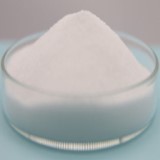|
|
|
Acetic Acid Glacial & Solution ---- Boric Acid ---- Formaldehyde Solution ---- Fumaric Acid ---- Lactobionic Acid ---- Maleic Acid ---- Malic Acid ---- Oleic Acid ---- Phosphoric Acid ---- Phosphorous Acid ---- Phthalic Acid ---- Picolinic Acid ---- Picric Acid ---- Pidolic Acid ---- Propionic Acid ---- Pyruvic Acid ---- Salicylic Acid ---- Selenious Acid ---- Sorbic Acid ---- Stearic Acid ---- Succinic Acid ---- Sulfamic Acid ---- Tartaric Acid ---- Undecylenic Acid |
|
Succinic Acid or Butanedioic Acid SDS MSDS of Manufacturers & Exporters
Succinic Acid or Butanedioic Acid SDS, Safety Data Sheet SECTION 1. PRODUCT IDENTIFICATION Product Name & Other Names: Succinic Acid or Butanedioic acid. SECTION 2. HAZARDS IDENTIFICATION GHS, Globally Harmonized System Classification in accordance with 29 CFR 1910 Serious eye damage (Category 1) Labeling according to GHS USA & Regulation (EC) No 1272/2008
Signal Words: Danger Hazard statements: Precautionary statements: SECTION 3. COMPOSITION / INFORMATION ON INGREDIENTS Product Name & Other Names: Succinic Acid or Butanedioic acid. SECTION 4. FIRST AID MEASURES Always seek medical attention after first aid measures are provided. Eye Contact: Do not allow victim to rub eye (s). Let the eye (s) water naturally for a few minutes. If particle/dust does not dislodge, flush with lukewarm, gently flowing water for 5 minutes or until particle/dust is removed, while holding eyelid (s) open. If irritation persists, obtain medical attention. DO NOT attempt to manually remove anything stuck to the eye. SECTION 5. FIRE FIGHTING MEASURES Fire and Explosion Hazards: Not considered flammable but may burn at high temperatures. Airborne dusts of this product in an enclosed space and in the presence of an ignition source may constitute an explosion hazard. SECTION 6. ACCIDENTAL RELEASE MEASURES Personal precautions, protective equipment, and emergency procedures: Avoid breathing dust/fumes/gas/mist/vapors/spray. Use individual protective equipment (waterproof boots, suitable protective clothing, safety glasses, etc.). Do not approach facing the wind. Close-fitting safety goggles may be necessary in some circumstances to prevent eye contact. SECTION 7. HANDLING AND STORAGE Precautions for safe handling: Apply according to good manufacturing and industrial hygiene practices. Ensure proper ventilation. Wash thoroughly after handling. Do not drink, eat, or smoke while handling. Avoid contact with skin, eyes, and clothing. Minimize dust generation. Avoid breathing dust/fumes/gas/mist/vapors/spray. Keep container tightly closed. Avoid ingestion and inhalation. Use individual protective equipment (waterproof boots, suitable protective clothing, safety glasses, etc.). SECTION 8. EXPOSURE CONTROLS / PERSONAL PROTECTION Exposure limit(s): Contains no substances with occupational exposure limit values in some countries. Better go by 5 mg/m3 TLV ACGIH. SECTION 9. PHYSICAL AND CHEMICAL PROPERTIES Appearance: It is a white, granules crystals or powder SECTION 10. STABILITY AND REACTIVITY Stability and Reactivity: Stable and not considered reactive under normal temperatures and pressures. Hazardous polymerization or runaway reactions will not occur. SECTION 11. TOXICOLOGICAL INFORMATION Acute Toxicity: SECTION 12. ECOLOGICAL INFORMATION Toxicity to fish: semi-static test LC50 - Danio rerio (zebra fish) - > 100 mg/l - 96 h. SECTION 13. DISPOSAL CONSIDERATIONS Put uncontaminated material back into the process if possible. Dispose of waste material consistent with the requirements of waste disposal authorities. SECTION 14. TRANSPORT INFORMATION Land Transport DOT USA, TDG Canada & ADR/RID Europe: Not controlled. SECTION 15. REGULATORY INFORMATION USA Regulations: SECTION 16 - ADDITIONAL INFORMATION DISCLAIMER: The information and recommendations set forth herein are presented in good faith and believed correct as of the date hereof. It is compiled from various sources, and it is not necessarily all inclusive nor fully adequate in every circumstance. In addition, these suggestions should not be confused with nor followed in violation of applicable laws, regulations, rules, or insurance requirements applicable. This SDS MSDS sheet is intended only as a guide to the appropriate precautionary handling of the material by a professionally trained person using this product. Individuals receiving the information must exercise their independent judgment in determining its appropriateness for a particular purpose. This shall not constitute a guarantee for any specific product features and shall not establish a legally valid contractual relationship. In no case shall our company be liable to loss or damages by the product user. |
Crystal Clear Products and the group companies are manufacturing chemicals since several decades. We have automatic vacuum operated titanium evaporators and SS316 equipments to produce top grade of chemical products. We have toll manufacturers and representatives in China, UAE, Europe, Canada & USA and agents & customers in all countries like USA, Canada, Europe, UAE, South Africa, Tanzania, Kenya, Egypt, Nigeria, Uganda, Turkey, Mexico, Brazil, Chile, Argentina, Bangkok Thailand, Kaula Lumpur Malaysia, Dubai UAE etc. & sales representative in Chicago, Houston New York & Los Angeles, USA. Associated units are FDA-GMP certified, Halal and/or Kosher certified, REACH registered, ISO-9001, ISO-22000 HACCP certified, Crisil Rated.
Contact Succinic Acid or Butanedioic Acid IP BP Ph Eur EP JP USP NF ACS Analytical Reagent FCC Food Grade manufacturers exporters at:

Crystal Clear Products
Plot No-C1-1031-9, GIDC Estate, Panoli, Ankleshwar, Gujarat - 393002. India
Telephone Mobile: 91-7506449333; e-mail: info@crystalclearproducts.org
e-mail: info@crystalclearproducts.org
Manufacturers, Suppliers of IP BP Ph Eur EP JP USP NF FCC Food, ACS Reagent GMP Grades of Chemicals like Succinic Acid or Butanedioic Acid or Ethane-1,2-dicarboxilic acid





